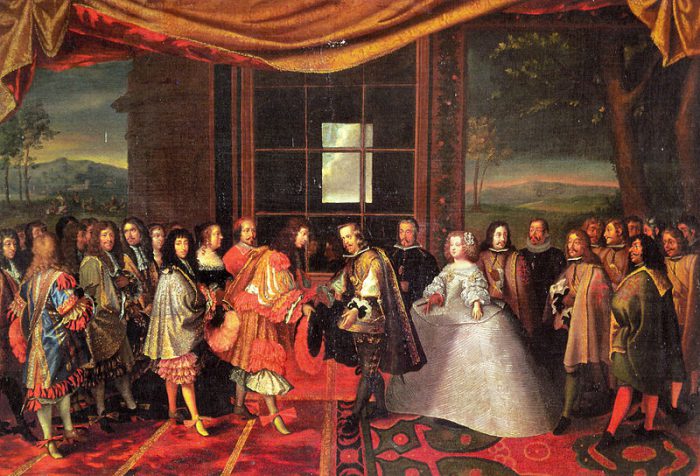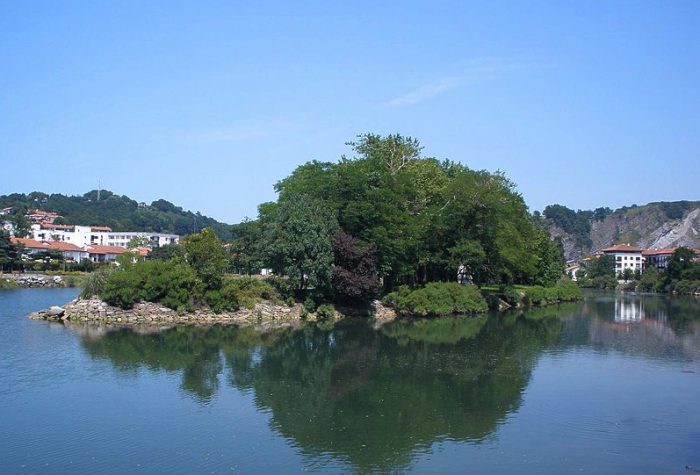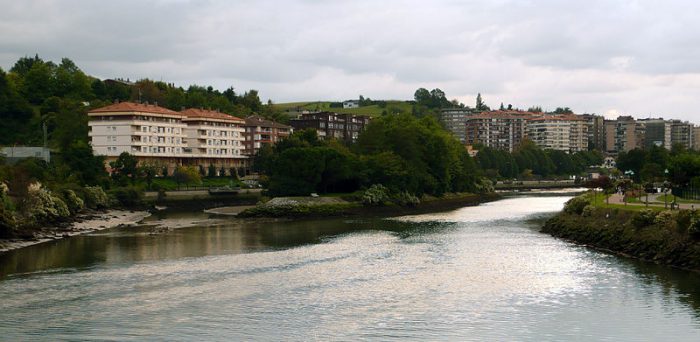It is tiny. No one lives on it. And you can't even visit it (except on a few special days). But in its own way, Pheasant Island is one of the most interesting islands in the world.
And where is it exactly? Well, that depends on when you ask. You see, yesterday it was in France. But today? It's in Spain.
Hold on, it...moves?
Nope. But the island does switch ownership twice a year. And the reasons why date back about 350 years.
Battle royale

"We should've got together ages ago..." Spain and France sign the Treaty of the Pyrenees to end the Thirty Years War. (Jacques Laumosnier/Wikimedia Commons)
For much of the first half of the 1600s, nearly all of Europe was engaged in a huge conflict called the Thirty Years War. This war lasted from 1618 to 1648 and claimed the lives of around 8 million people.
However, that wasn't enough for France and Spain. Already on opposite sides in the Thirty Years War, they then decided to start their own conflict with each other, the Franco-Spanish War. Started in 1635, it lasted almost thirty years, too. By 1659, both sides finally figured that was enough fighting for one century (actually, they'd be back at it in eight years), and that it was time to sign a treaty.
There was only one problem...where could they sign such an agreement?
Pheasant in the middle

Pheasant Island as seen from Spain. The island is only 200 metres (650 feet) long and 40 metres (130 feet) wide. (Zarateman/Wikimedia Commons)
Enter Pheasant Island (Isla de los Faisanes in Spanish or Île des Faisans in French). Found smack in the middle of the Bidasoa river on the French-Spanish border, it was considered neutral territory by both sides. When the Treaty of the Pyrenees was signed on November 7, 1659, one of the clauses said that the island itself would be split between the two nations.
From February 1 (today!) to July 31, it would be Spain's, while France would have it from August 1st to January 31st. Better late than never, we suppose. As for the island itself, it does leave one wondering...why?
Not that type of condo
Because...tradition? Pheasant Island has no strategic value, no crops, no resources...it doesn't even look that nice. But just like how people insist on roasting a turkey for Thanksgiving, there's a real comfort to be found in traditions.
Incidentally, the name for this kind of property sharing? Condominium. Yep, the term that is all the rage in major cities as a place to live, was originally used to describe a political territory that two or more nations held ownership over. (In Latin, con is "together", and dominium is "right of ownership".)
So here's to the island "condo" without any residents that signals the end of one of the longest-running conflicts in European his...wait, what's that? There was a Hundred Years War, too?? Oh, man...
 Pheasant Island sits in the middle of the Bidasoa River. In this picture, Spain is to the left, France is to the right. (Ignacio Gavira/Wikimedia Commons)
Pheasant Island sits in the middle of the Bidasoa River. In this picture, Spain is to the left, France is to the right. (Ignacio Gavira/Wikimedia Commons)










😯 😯 😯
Sooo weird
cool!!